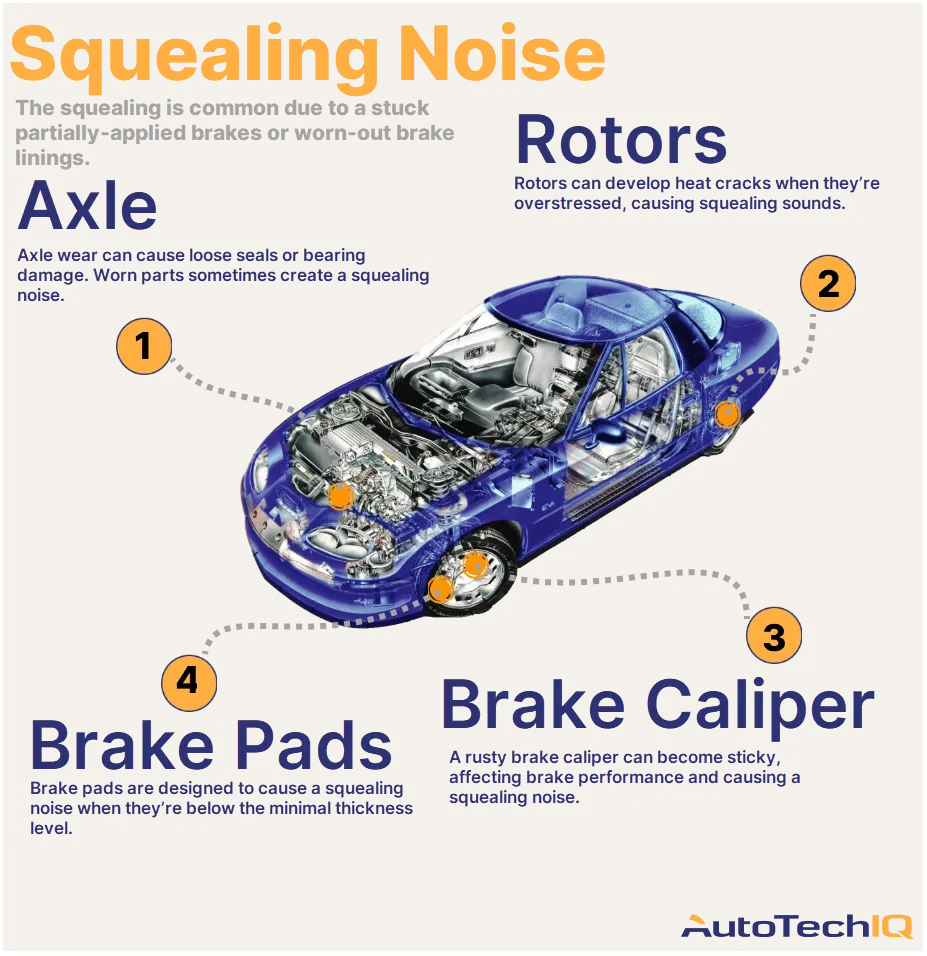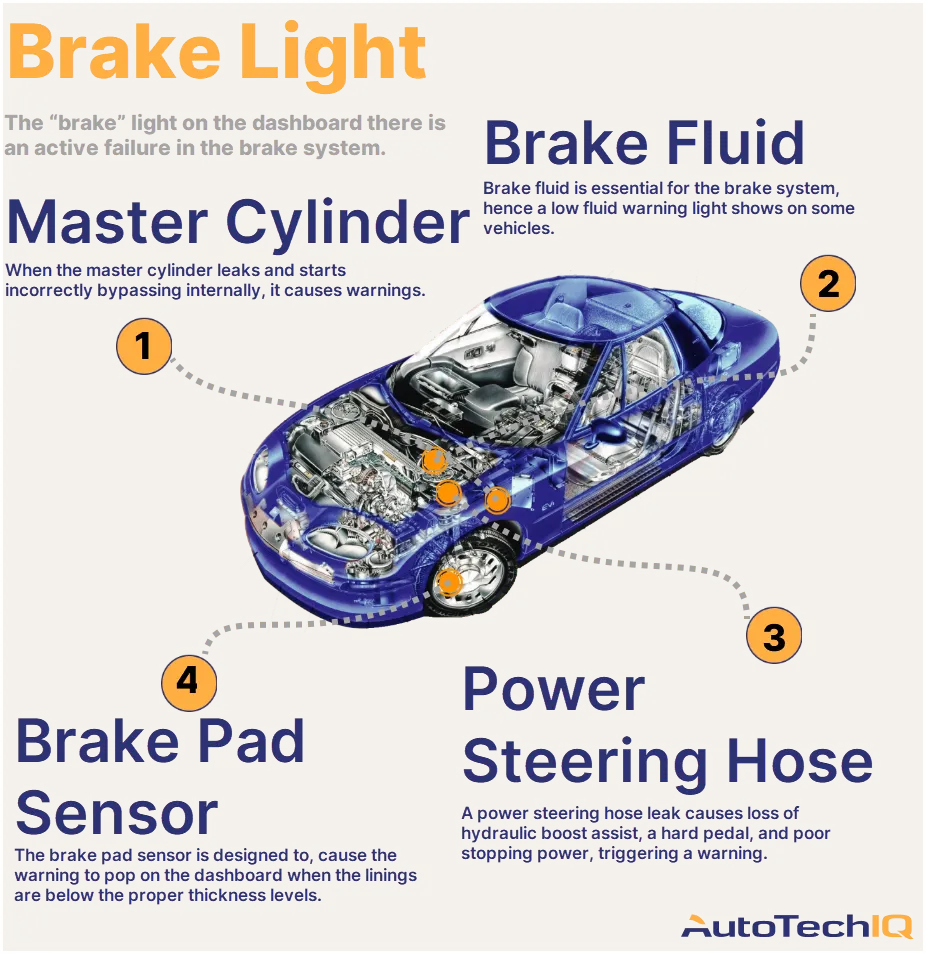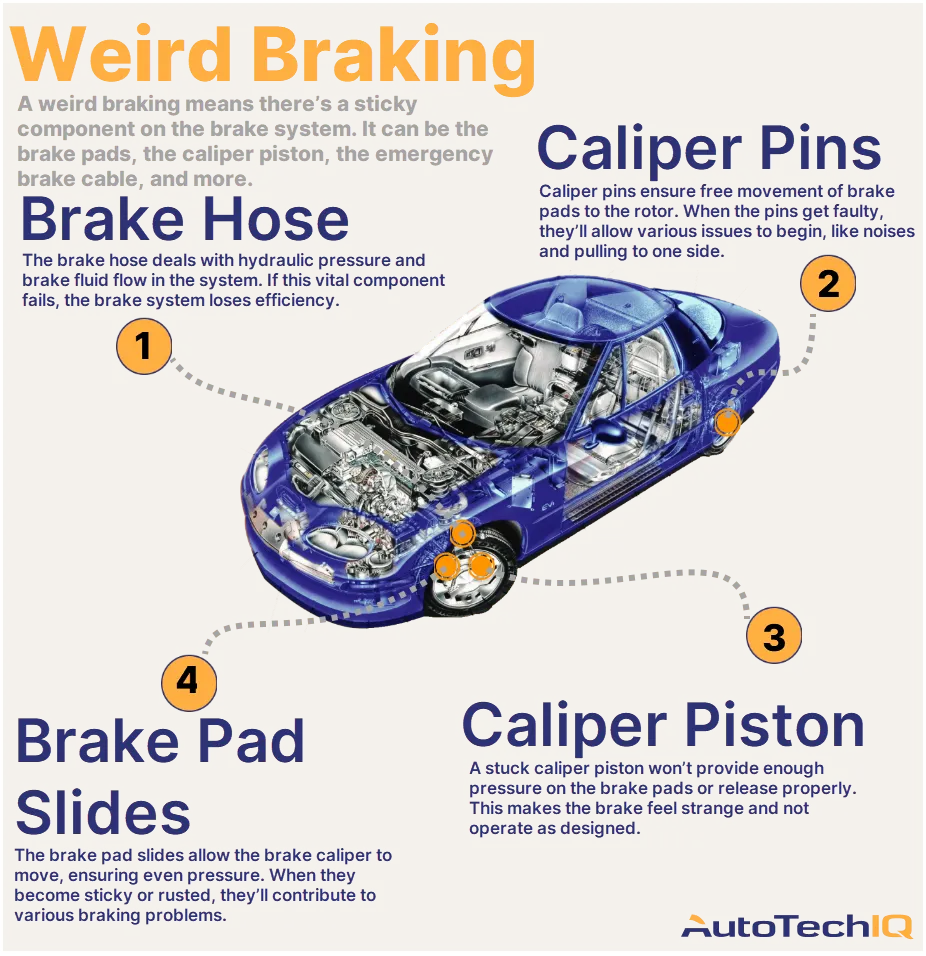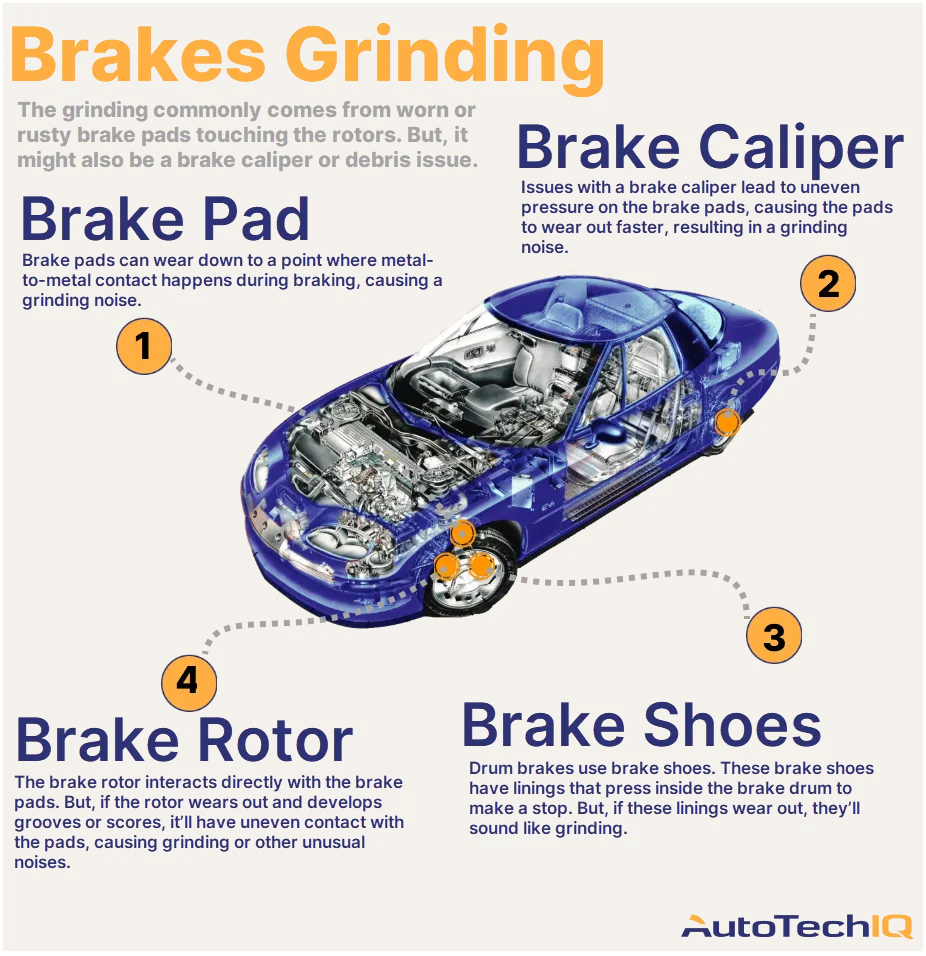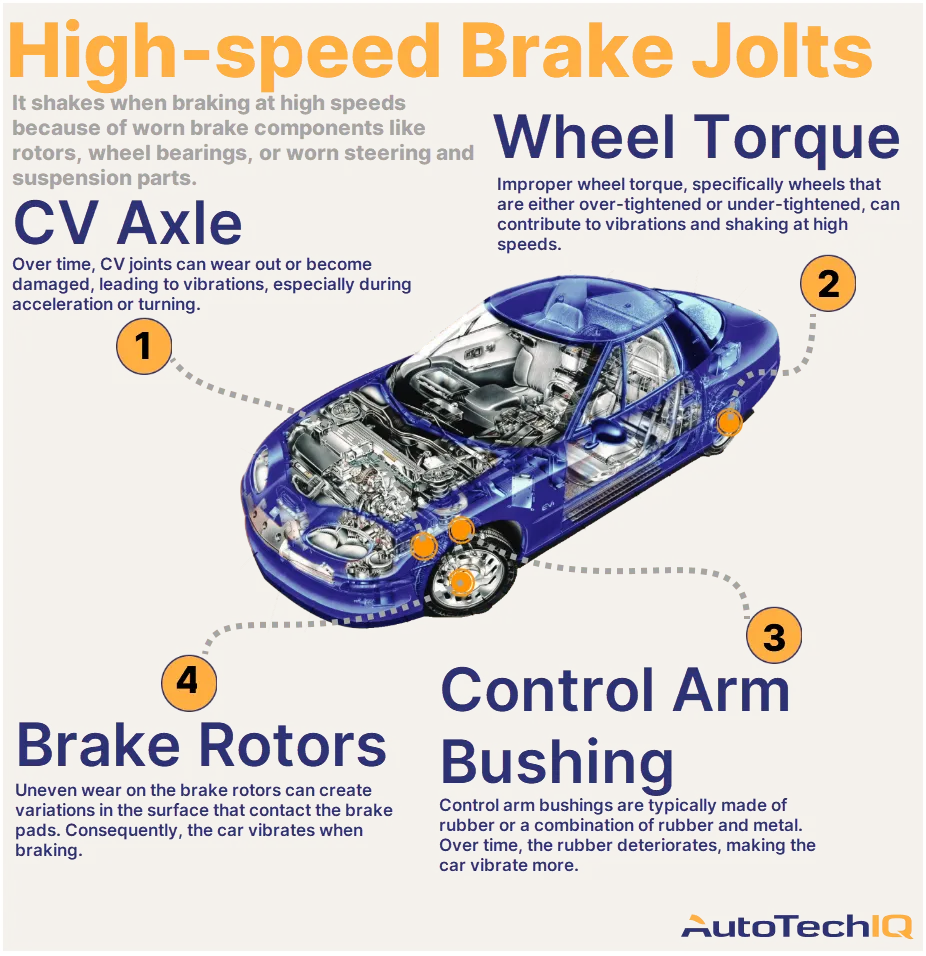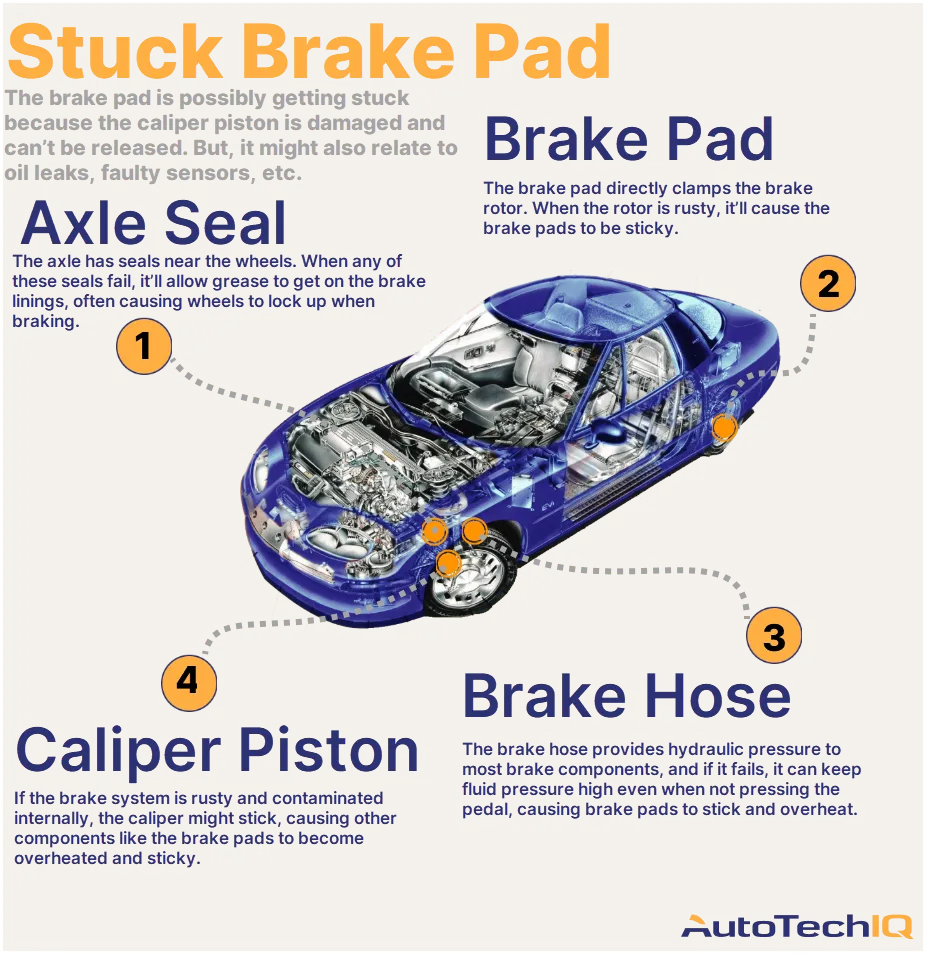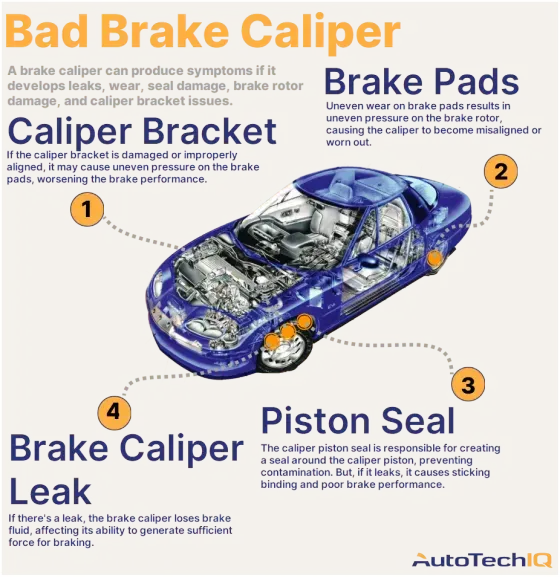
Are You Seeing Bad Symptoms From Your Brake Caliper?
The brake caliper is bad because it got greasy due to a fluid leak (possibly from the axle seal) near it. A brake caliper might also become stuck for other reasons, like worn brake pads, faulty caliper brackets, piston seal damage, a faulty master cylinder, a bent brake rotor, etc.
Watch out: If your car's brake caliper is bad, it might cause uneven braking and compromise your safety on the road. The brake caliper needs to work properly so you can safely stop your vehicle during demanding situations. Additionally, brake caliper issues can affect other brake components, resulting in a complete brake system problem.

